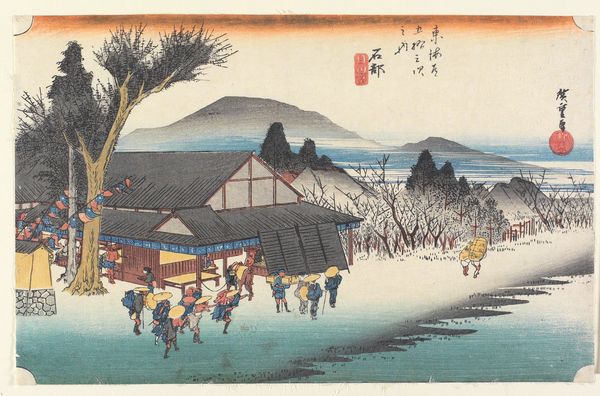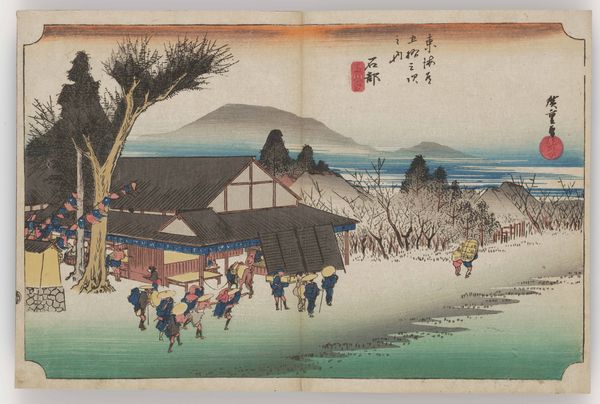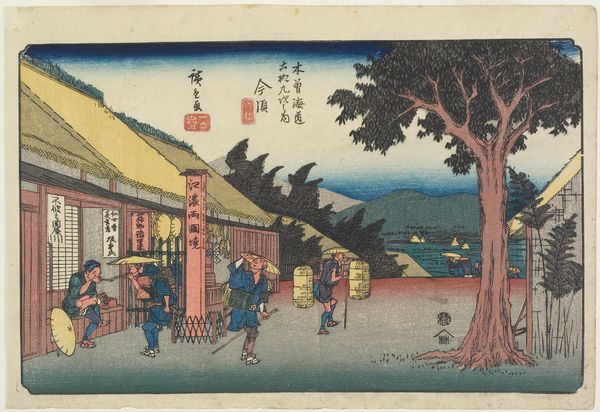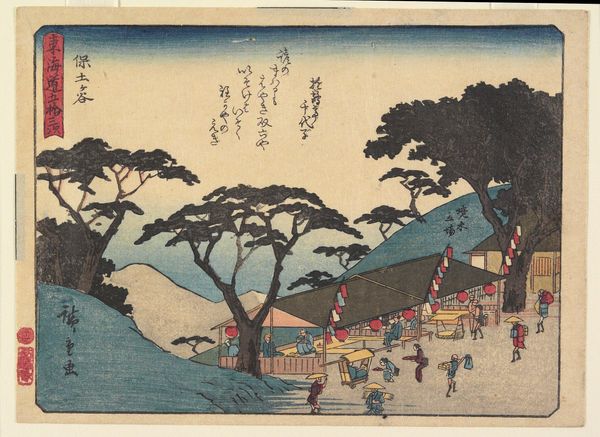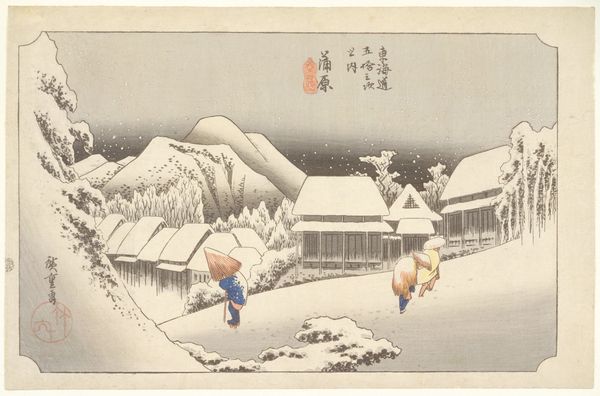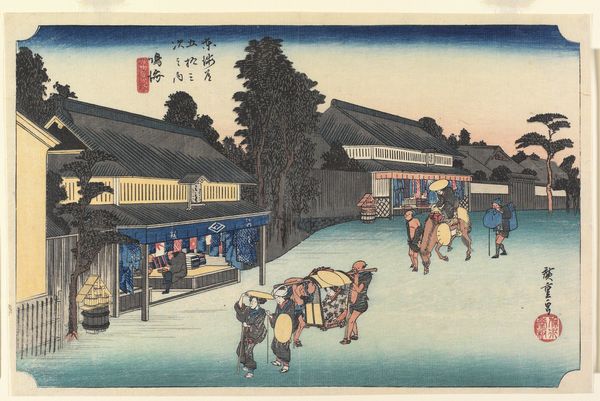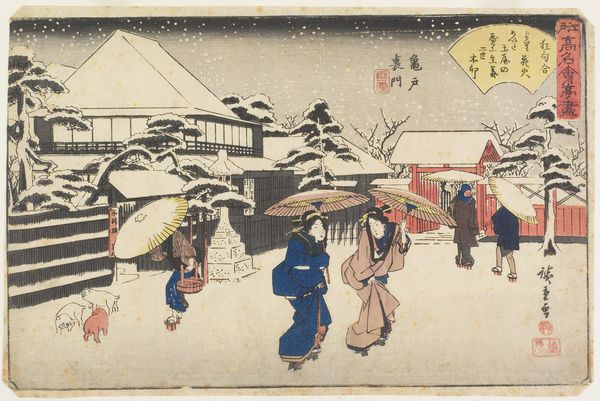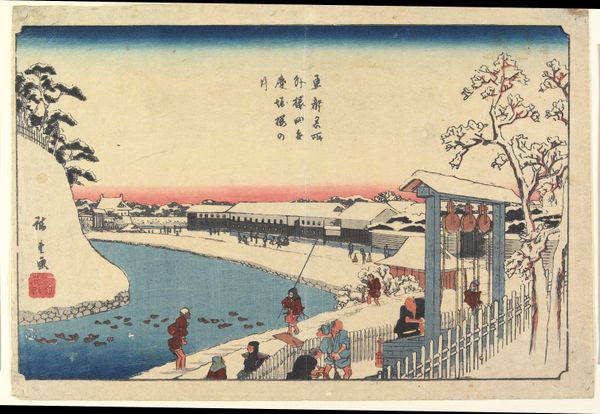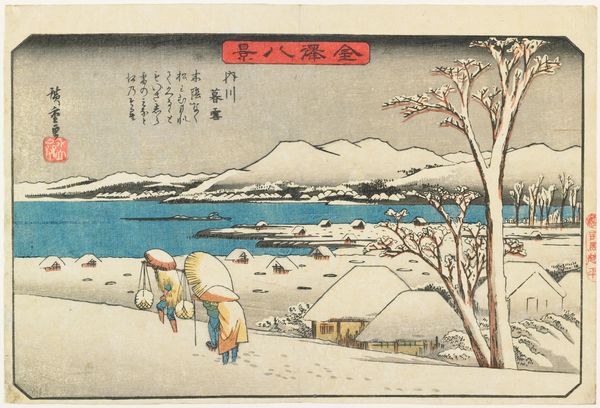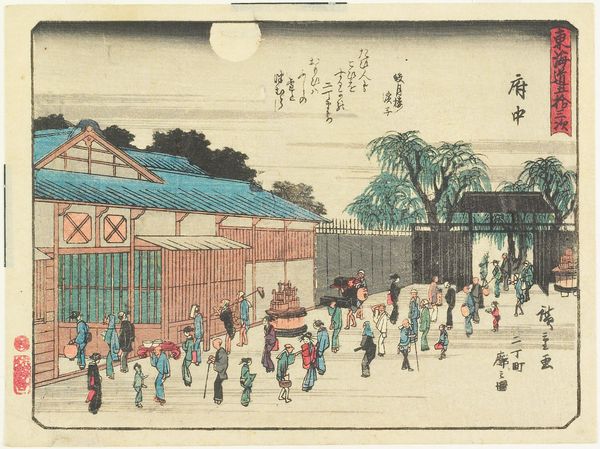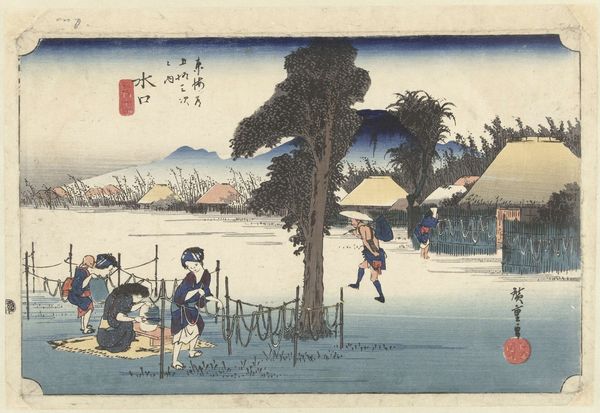
print, ink, woodblock-print
# print
#
asian-art
#
landscape
#
ukiyo-e
#
ink
#
woodblock-print
Dimensions: 9 3/16 × 14 3/16 in. (23.3 × 36 cm) (plate, horizontal ōban)
Copyright: Public Domain
Curator: This is "Ishibe" by Utagawa Hiroshige, a woodblock print created around 1832 or 1833. It’s currently part of the collection at the Minneapolis Institute of Art. Editor: The first thing that strikes me is the incredible sense of movement, almost like a freeze-frame from a bustling documentary scene. And the cool, muted palette – lots of blues, grays, and creams – gives it this kind of serene yet melancholic feel. Curator: Exactly! That subdued palette, despite the active scene, speaks to the broader ukiyo-e tradition – "pictures of the floating world." Hiroshige often used these calming colors to capture fleeting moments of everyday life and the transient beauty of nature. See the procession of figures in the foreground and how they diminish in scale, pulling your eye back toward the landscape? Editor: It’s ingenious, really. And those figures, presumably travelers on the Tokaido road, each has a distinctly different posture. Their presence seems to soften and bring to scale the formidable landscape of a dormant mountain, like an actor within the immensity of stage scenery. Curator: Indeed. Hiroshige captures that sense of scale intentionally. This print, like many from his "Fifty-three Stations of the Tokaido" series, isn't just a depiction of a location. The procession of travelers and the figures inside the structure suggests communal labor. Editor: It makes me think of time and transitions—a place that offers welcome and departure. Look how skillfully he’s balanced detail with simplicity, leaving so much open space, inviting you to contemplate the space and activity captured! Curator: What's intriguing is the cultural reading too. We see the symbols of travel and pilgrimage embedded: The clothes, the sticks, and their baggage, for instance, but how the composition directs your view beyond those very earthly matters! The symbolic resonance is what separates Hiroshige from being simply an observer to being an insightful social commentator. Editor: Definitely! It’s one of those pieces you could stare at forever and keep finding new details, and meanings—visual details as well as emotional nuances. Curator: Agreed, a truly compelling piece offering perspectives on transit, cultural life, and art that are relevant today. Editor: For sure—a landscape not just of a place but of an entire human experience.
Comments
No comments
Be the first to comment and join the conversation on the ultimate creative platform.
